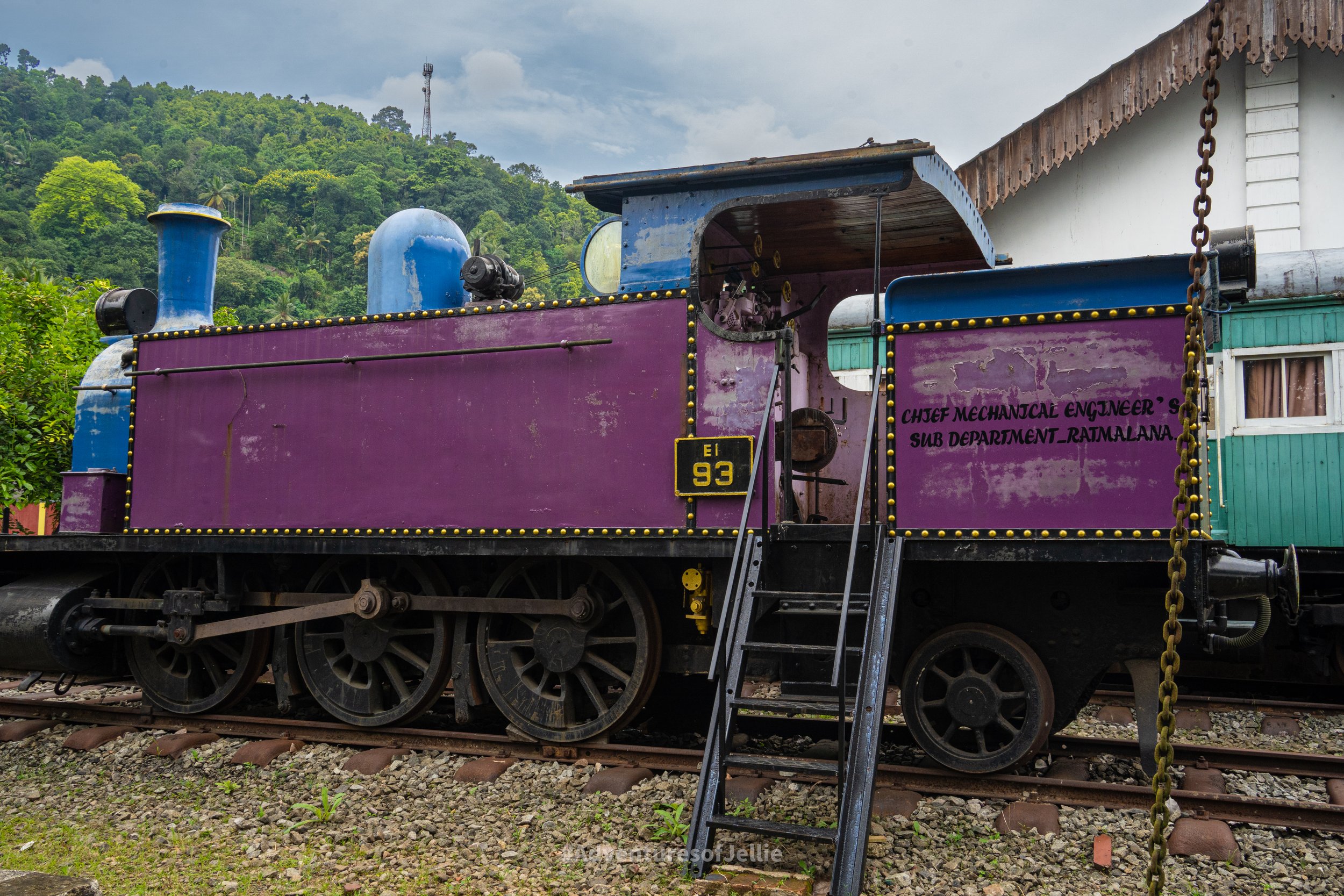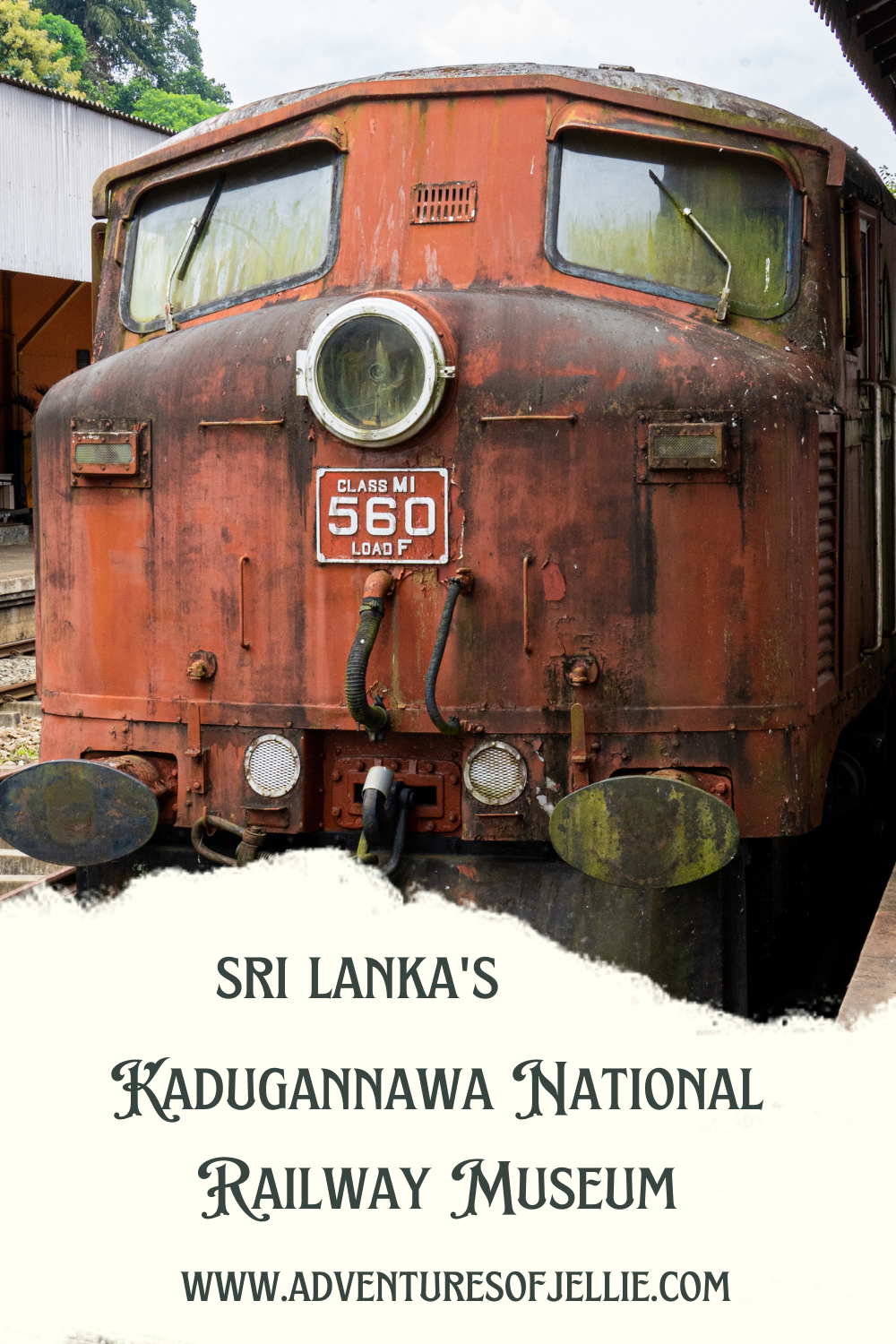Kadugannawa National Railway Museum - An Anorak Kind Of Day
As with many things on our adventures, it all started with YouTube. This time around it was Dale Phillips' YouTube channel which served as inspiration. Featured in one of his videos, was a ramshackled collection of memorabilia, rusted engines and colourful locomotives, these were all housed in the Kadugannawa National Railway Museum. We had explored the city of Kandy quite extensively (read our guide here) and fancied a day out.
How to Get to Kadugannawa National Railway Museum
Just a short train ride (or bus as we later found) away from Kandy we thought Kadugannawa would make for a fun excursion for the day. Rucksack packed, snacks acquired and dressed for the part in our snazzy anoraks we headed out. The anoraks were due to the rain, not just uniform for our day of train fancying.
Arriving at Kandy station with what we thought was ample time to buy tickets, we saw a vast queue of people snaking out of the door of the railway station. Realising that this queue was not moving, but time was quickly slipping away, we decided we wouldn’t be able to make the train and now would be the perfect opportunity to try out Sri Lanka’s famous/infamous public buses.
Just a quick note on the above - we later realised that the queue we saw was for third class tickets only. Inside Kandy railway station, there are other counters for first and second class tickets that have shorter, much faster moving queues. This is true at all major Sri Lanka railway hubs across the country.
After a stressful 40 minutes walking the length and breadth of the various bus stands (Kandy has quite a few) and ascertaining that Google Maps was a big fat liar, we found ourselves sitting comfortably on board the rickety chairs of the 690 bus service. We’ve found during our time in Sri Lanka (July to October 2022) that Google Maps is very unreliable when it comes to train times and nearly totally useless when it comes to buses. On this occasion, Google wasn’t even aware that the 690 bus existed, let alone the times it would be departing. If you are planning to travel by bus, we would recommend you ask at the bus station for the correct bus you need/times of departure.
One of Kandy’s bus stands
When you board a Sri Lankan bus, you do not buy the ticket then and there. Instead you take your seat and wait for the designated ticket seller to come around. This can happen pretty much at any point in your journey. When the ticket seller does come around, just let them know the stop you’re getting off at and you will be sold a ticket and generally looked after. For those travelling with big bags, get on the front of the bus (there are entrances both front and rear) and place your big bags on the shelf next to the driver. Don’t be too alarmed if the bus ticket seller moves them as he may need to put them under the bus. There are also shelves above the seats for smaller bags. When we’ve used the buses the ticket sellers have signalled to us to let us know when it is our stop and even helped us with the bags.
Whilst we waited to leave Kandy, and slowly started steaming in our own sweat, the bus was inundated with vendors selling all manner of goods. From the snacky variety - papaya to samosa, the drinky variety - tea to Coca Cola and then to bizarre variety - a colouring book in case you felt like brushing up on your art skills? Perhaps you need a new necklace (definitely genuine gold)? Or maybe now is the time you really should invest in laundry soap? Don’t worry the Sri Lankan bus vendor has you covered! Privately wondering if there really is a bus born market for detergent, we paid for our tickets - 242 LKR for two of us ( £0.59 or $0.66).
The bus left the busy streets of Kandy and wove past the Royal Botanic Gardens before heading into the hills and valleys of the surrounding area. After about 45 minutes to an hour and a slightly numb bum we arrived at Kadugannawa town.
Visiting The Kadugannawa National Train Museum
The railway museum is right next door to Kadugannawa railway station. Opened in 2014 and replacing the original Colombo museum, Kadugannawa National Railway Museum was built to commemorate the 150th anniversary of Sri Lanka’s railways. It’s a compact little museum, spread over a train shed, a platform and two outside areas.
Wandering in off the street we bought our tickets paying 1000 LKR for two tickets (£2.42 or $2.76). The tickets were presented by a little old man and were actual railway tickets that he plucked out of an old set of sorting shelves. We were immediately joined by a lovely attendant who was to show us around the museum. Our guide was very eager for us to clamber upon, take photos and interact with the museum's many exhibits. We had a fun time being shown around the inside of the museum, taking photos sat in and upon trains and having a spirited and interesting demonstration of the token system that stops trains running into each other on the mountainous single track lines of Sri Lanka.
We found the token system to be fascinating (we are interesting and cool people honest)! The system in place, seems to be the closest thing to ‘idiot proof’ that we can imagine. Seeing as this arrangement stops oncoming trains from meeting other trains, this is probably just as well. The way it works is that each station has a machine that accepts or gives out a metal token. This is passed to the train driver going up or down a single line. The machine cannot be reset without a token. A train going up a line collects a token from the first station, travels up the single track and delivers the token to the next station. No other train can go on the line whilst the token is out, and the machine cannot be forced to accept or deliver tokens without the correct tokens being inserted. When riding the trains, you will often see these tokens being passed from driver to platform and vice versa in the form of a big loop of leather with a metal token hanging off it like a pendant. This safety system has been in place for years, and despite all its parts looking antiquated now, has never needed an update.
The vintage (but still functional) token signalling system.
Also inside, was a massive model railway where they had combined, in a sort of greatest hits display, the highlights of the Sri Lanka rail network. It was like the Hornby set of your dreams with trains running over the Nine Arch bridge through model towns and tunnels and round the spiral of the Demodara loop (check out our article on the Demodara Loop here).
Outside our guide left us our own devices and we spent a good amount of time clambering in and out of old engines, carriages and steam locomotives. In one of the carriages, there is a 10 minute video giving a brief (but probably sanitised) history of the Sri Lankan railway network. Another carriage also houses a coffee shop but this was not open when we were there. In the time we had in the museum we were the only visitors, and we didn’t see any other tourists getting off the trains at Kadugannawa. This may explain why the coffee shop wasn’t open.
After some time walking the railway track, looking at the old signalling levers and debating how structurally sound some of the older, more decayed carriages were, we felt we had seen what there was to be seen. We had been in the museum for about an hour, but felt that if you were a train buff you could easily spend more time exploring the exhibits.
Train knowledge acquired, geek levels overflowing and with many photos of Ellie the train driver we donned our anoraks (we felt we now earned them) and jumped back on the bus to Kandy.
We know the journey to the museum took about as long as we spent in the museum, and we also know that trains aren’t everyone's cup of tea (there not really ours normally) but we do feel that the National Railway Museum was well worth our time, and provided with a great little practice run on the Sri Lankan bus network. It was super easy to get there from Kandy with both buses and trains going there. Google Maps (as it would throughout this trip) made it look like a much more complicated journey than it was.
Essential information for Visiting the Kadugannawa National Railway Museum
Where is the Kadugannawa National Railway Musem?
Here! - Easily accessible from Kandy by both bus and train.
How much do tickets to Kadugannawa National Railway museum cost?
Entrance to the museum is 500LRK per person.
How long do i need to spend there?
Up to you of course! We, who have zero train knowledge or special interest spent around an hour there. If you are into trains, or the coffee shop is open, you could spend a while longer!
Is the Kadugannawa National Railway Museum worth the trip?
We hate this question but google seems to love it so - YES we very much enjoyed the journey to and our time at the museum. Like we have said, we are not “into” trains or anything it was just a fun day out riding the buses and seeing the old trains.
Thanks for reading.
John & Ellie x
#adventuresofjellie
If you find yourself in Ella make sure you check out the engineering railway marvel that is the Demodara Loop.
If you’ve enjoyed reading this article, why not save the pin below?









